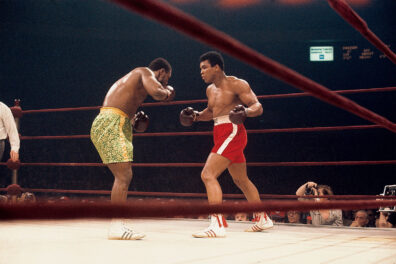
Test plate and print by Jacob Samuel, July 2019
An intaglio print is an image printed on paper from a copperplate. An artist can incise, or cut, a design onto the surface of the copperplate. When ink is applied to the plate, it is held in the incisions and then the inked image is transferred onto the paper.
This is different than a relief technique, like a woodcut, in which the ink adheres to the raised portion of the wood, or a planographic technique, like lithography, in which the ink adheres to a drawing on the flat surface of the stone.
Currently on view at the Getty Center, Käthe Kollwitz: Prints, Process, Politics gives viewers an opportunity to see how this German printmaker created prints in a variety of techniques. The exhibition brings attention to the artist’s creative process, while also revealing the depth of her social and political engagement.
It includes sequences of rare preparatory drawings, working proofs, and trial prints, which reveal how Kollwitz tirelessly worked through numerous drafts of a composition, often experimenting with different printmaking processes, in order to achieve an image with which she was satisfied.
To get a better understanding of how Kollwitz made her intaglio prints, we turned to master printer Jacob Samuel, lecturer in the Department of Art at the UCLA, who demonstrated some of the processes Kollwitz used.
We also compiled a list of printmaking terms and definitions, below.
Matrix and Impression
To make a print, an artist creates a design on a flat surface called a matrix. This matrix, which can be a copperplate, stone, or woodblock, is then inked and printed, transferring the design in mirror image onto a sheet of paper. The printed sheet is called an impression. A single matrix can be printed repeatedly to generate multiple impressions.
Intaglio
An intaglio is printed from a copperplate with an incised design. The plate surface is covered with an ink layer and then wiped clean, leaving ink only in the incisions. A damp sheet of paper is laid on the plate, and the two are run through a press. The paper is forced into the grooves and pulls out the ink, printing an impression. While incising techniques differ, such as drypoint, etching, and aquatint, the process of printing an intaglio remains the same.
Drypoint
Drypoint involves scratching lines directly into the surface of the copperplate using a sharp, pointed tool, or needle. As the needle scores the copper, little metal shavings, called burr, curl up along the sides of the incised line. The burr holds ink and, when printed, enhances the line with a velvety smudge.
Etching
Etching relies on the corrosive action of acid to cut into metal. The copperplate is coated with a waxy substance, or ground, that is impervious to acid, or mordant. The artist draws a design through this ground, uncovering the metal. The plate is then immersed in the mordant, which bites the exposed metal, eating away the lines and marks that will hold ink. The ground is removed, and the plate is inked, wiped and printed. A hard ground produces finer lines, while a soft one creates broader marks. Lengthening exposure time to the mordant increases the lines’ depth (or darkness).
Aquatint
Aquatint is an etching technique that produces tone rather than line. The copperplate is coated with a powdered rosin (resin) and then heated to adhere to the rosin particles to the plate. Immersed in acid, the bare metal is bitten around the impervious particles, leaving a network of tiny incised rings that will hold ink. When printed, this granular pattern creates a tonal film of ink that approximates the look of wash. Changes to the size of the rosin grains and the plate’s exposure time to acid will vary the density of the tone.
Lithography
In lithography, a drawing is applied in a greasy medium onto the matrix, traditionally a limestone block, which is then chemically treated in two ways: diluted nitric acid fixes the drawing to the stone and makes it receptive to oil; gum arabic protects the untouched surface from absorbing new marks. To print, the stone is dampened with water and rolled over with ink. The oil-based ink sticks to the drawing and is repelled by the water. Paper is laid atop the stone and passed through the press. The artist can draw directly on the stone or on a sheet of transfer paper (from which the drawing is transferred to the stone).
Woodcut
This technique entails cutting a wooden block, leaving a design in relief by gouging away the surrounding areas. Ink is applied only to the raised surfaces of the block—which carry the design—and not to the recessed, carved-out areas. Paper is placed on the inked block, which can be printed using a press or by rubbing the back of the sheet by hand. Kollwitz used different woods, including hard pear and softer pine, cut into planks along the grain. A hard wood, while more challenging to carve, allows for finder details and better withstands the repeated pressure of the press.




Comments on this post are now closed.